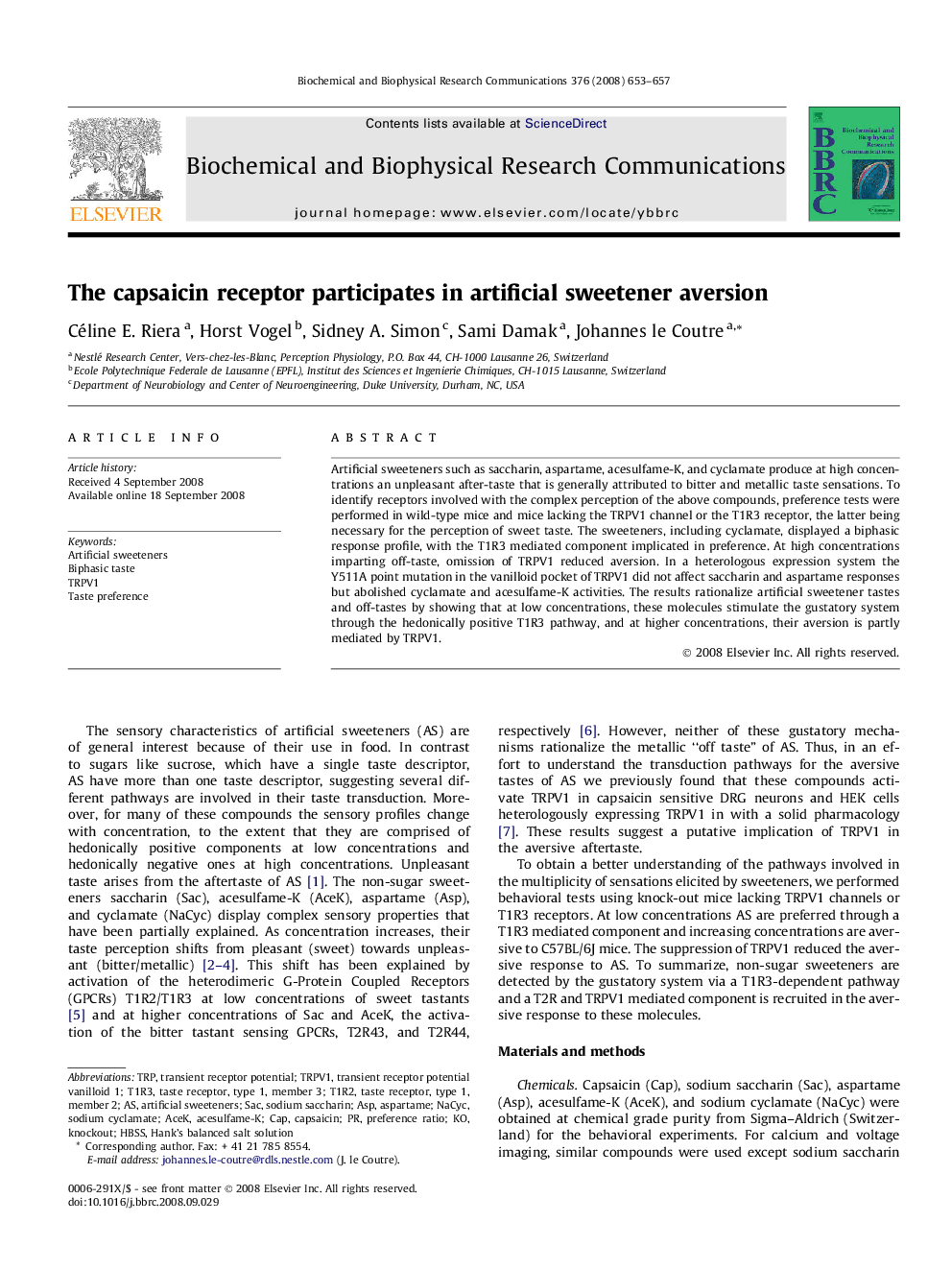| Article ID | Journal | Published Year | Pages | File Type |
|---|---|---|---|---|
| 1934415 | Biochemical and Biophysical Research Communications | 2008 | 5 Pages |
Artificial sweeteners such as saccharin, aspartame, acesulfame-K, and cyclamate produce at high concentrations an unpleasant after-taste that is generally attributed to bitter and metallic taste sensations. To identify receptors involved with the complex perception of the above compounds, preference tests were performed in wild-type mice and mice lacking the TRPV1 channel or the T1R3 receptor, the latter being necessary for the perception of sweet taste. The sweeteners, including cyclamate, displayed a biphasic response profile, with the T1R3 mediated component implicated in preference. At high concentrations imparting off-taste, omission of TRPV1 reduced aversion. In a heterologous expression system the Y511A point mutation in the vanilloid pocket of TRPV1 did not affect saccharin and aspartame responses but abolished cyclamate and acesulfame-K activities. The results rationalize artificial sweetener tastes and off-tastes by showing that at low concentrations, these molecules stimulate the gustatory system through the hedonically positive T1R3 pathway, and at higher concentrations, their aversion is partly mediated by TRPV1.
